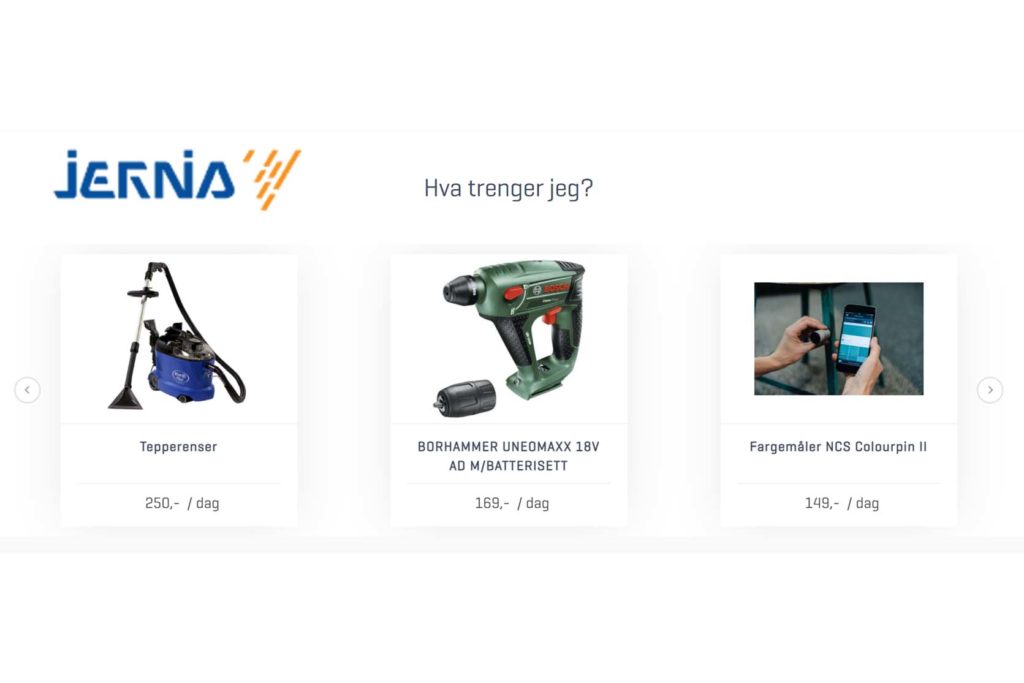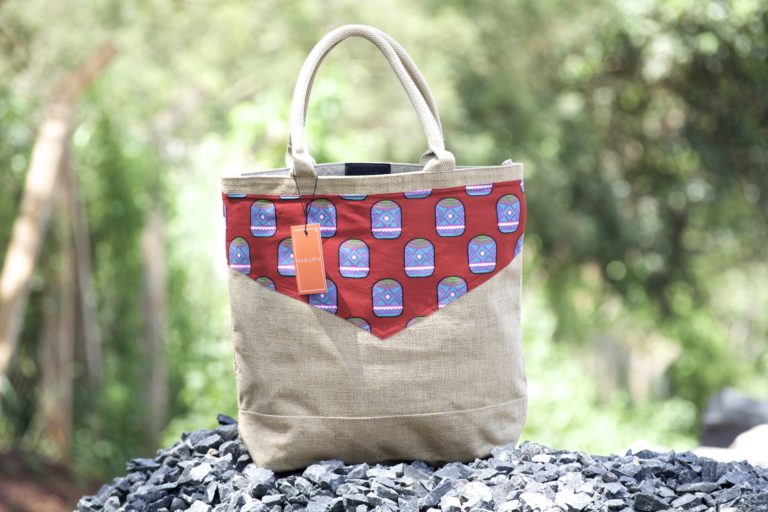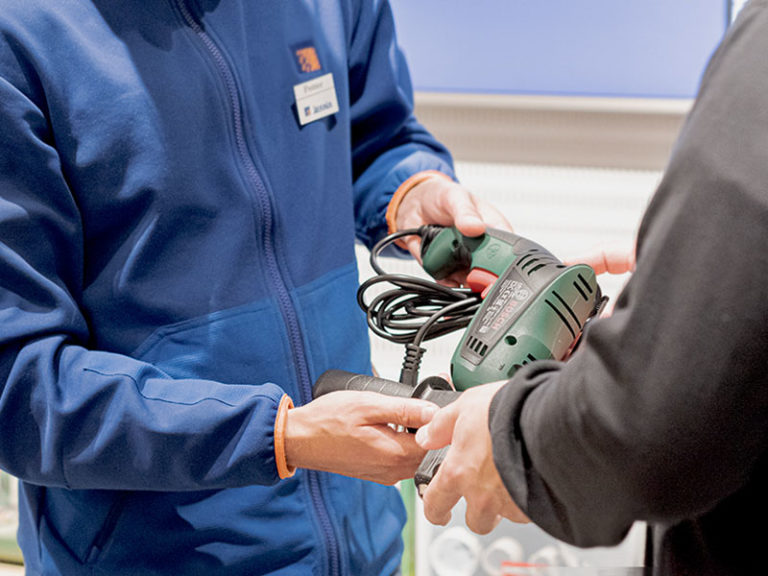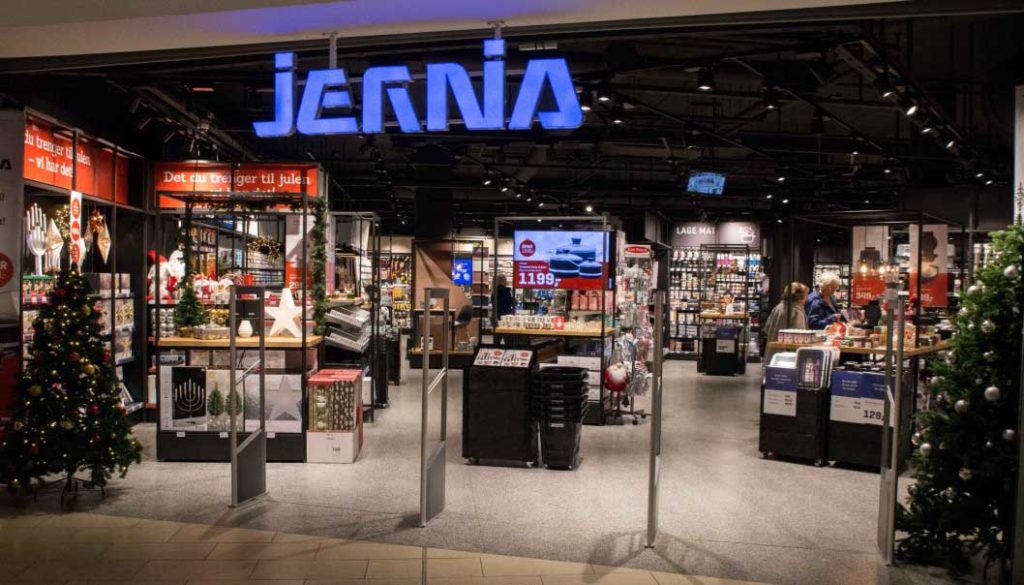

Rental services must deliver on five areas to meet consumers expectations
Retailers are experimenting on Circular initiatives, but in order to succeed, the services must bring value to the customer.

Is it more climate-friendly to rent tools than to buy and own tools? In the spring of 2021, Sharefox , in collaboration with Jernia , invited students at the Norwegian University of Life Sciences (NMBU) to investigate precisely this claim that renting is a climate-friendly alternative for the sale of tools. The results give a clear picture: Establishing rental systems for tools can result in large emission reductions.
The difference between an ownership system and a rental system in terms of the production phase is very clear. In a system where all customers want to buy and own their own tool, it will be necessary to produce an estimated 12 times more tools per user than if everyone chooses to rent. This results in 12 times as high emissions from the production of the tool for a customer who owns compared to a customer who rents.
Jernia is a company that wants to take the lead in sustainable models in the trading sector. With digital rental systems from Sharefox, they are now in the process of renting tools. The goal of offering customers the opportunity to rent tools is to contribute to the green shift and make their business model more circular and climate-friendly.
Based on three hobby tools from Jernia’s range, the students from NMBU carried out life cycle analyzes to compare greenhouse gas emissions from a rental system and a ownership system. Carrying out a life cycle analysis involves looking at the product’s emissions related to processes throughout its life. This is also referred to as a “cradle-to-grave” analysis.
«We at Jernia want to contribute the best possible to the green shift and create a circular economy. It is therefore an important step for us to rethink how our tools are utilized. ” says Andreas Hannevik, Category Manager Services, Jernia.

In the life cycle analyzes, there are two factors that prove to have an effect on the result. The first key factor is the distance from store to customer. Jernia has stores in several places in the country and the distance to customers varies. Long transport distance between store and customer can give the rental system such high transport emissions that the ownership system is preferable. This is because the customer must travel to and from the store every time the tool is to be used in a rental system. This indicates that rental systems are most effective in areas where the population lives close together and the store is close to most. For example, the emissions from transport between store and customer will exceed emissions from the ownership system if the distance is longer than 150 km.
The second key factor is how much a customer uses the tool within a year of owning the system. In the analyzes, it is assumed that an owner of a tool does not use the tool very often or for a very long time, with an assumed active use of, for example, 15 minutes per year. It has been proven that a relatively large increase in this service life will be able to make the ownership system more efficient. In other words, it will be more climate-friendly for a customer who will use the tool more than an assumed normal, to buy and own rather than rent. For example, it will pay off climate-wise to buy your own jigsaw, if you plan to use it for 10 minutes more than 11 times a year.
“It has been an exciting process for the students to get such an assignment from Sharefox and Jernia. This illustrates the importance of also thinking new in relation to consumer patterns and new business models in the circular economy. “ says Hanne Lerche Raadal, subject teacher at NMBU.
From the work, it is clear that the largest emissions are related to the production of the tools. Production, where raw materials are sourced from nature, processed and assembled into a tool, requires, among other things, a large proportion of plastic and steel. These are materials that give large emissions in the production phase.
The difference between an ownership system and a rental system in terms of the production phase is also very clear. In a system where all customers want to buy and own their own tool, more tools will have to be produced per customer than in a system where several customers share a tool. This leads to higher emissions from the production of tools for a customer who chooses to own compared to a customer who chooses to rent.
The findings from the analysis also show that a rental system has a large proportion of the emissions associated with transport. Especially in the transport between store and customer. Here, large parts of the emissions can be reduced by choosing more environmentally friendly alternatives for transport. Choosing public transport, electric car, or other forms of environmentally friendly transport, is positive for both ownership and rental system, but will have the greatest impact on a rental system. For urban areas, then transport will have little impact.

The results of the students behind the analyzes show that customer choices can make a big contribution to a climate account. In 2020, approximately 460,000 drills were imported to Norway. In a scenario where all of these had been leased rather than owned by Norwegian customers, emissions could be reduced by an estimated 82 million kg of CO2 equivalents. To put this in perspective, it can be compared with greenhouse gas emissions from flights that emit 181 grams of C02 per passenger kilometer (SSB 2020). With a rental system for drills sold in Norway, it is possible to save emissions in the amount of 700,000 round-trip Oslo-Bergen trips per person (Flight Time 2021).
“The life cycle analyzes of the students from NMBU clearly emphasize what we have been working on for a long period now, the importance of focusing more on renting rather than owning tools, in an environmental perspective.” says Andreas Hannevik, Category Manager Services, Jernia.
Greenhouse gas emissions are a well-known problem in today’s society, and are also the environmental impact the analyzes have examined most closely, but consumption of goods also causes other environmental problems. It is a fact that the consumption pattern we have in Norway is not in balance with nature’s ability to renew itself. Scarce resources, such as metals, are seized when tools are produced. With the main focus on resource use, a rental system will most likely always come out better than an ownership system. When fewer products are produced, the need to extract new resources from nature also decreases. This is positive, among other things, because it reduces encroachment on natural habitats of wild animals, plants, fungi and insects. We live on nature’s shoulders, and it benefits our own health and well-being to limit over-utilization of nature’s resources.
«Life cycle analyzes are important to illustrate how changes in consumption can also affect the use of resources in society. The students have done an impressive job showing that the environmental benefits of a rental system can be significant, “says Åsgeir Helland, general manager of Sharefox.
A big thank you to all students at the subject FORN220 at NMBU in the spring of 2021 for preparing life cycle analyzes, especially to Iselin Østvedt, Anna Voldseth, Emilie Rohde Larsen and Jonas Berg Hagemoen who have summarized the results in the article. Thanks to subject teacher Hanne Lerche Raadal.

Retailers are experimenting on Circular initiatives, but in order to succeed, the services must bring value to the customer.

what services should they offer in addition to selling goods? This is the topic Ole Martin Evensmo of SpringBoard Martech
Questions? Get in touch with us or book a demo